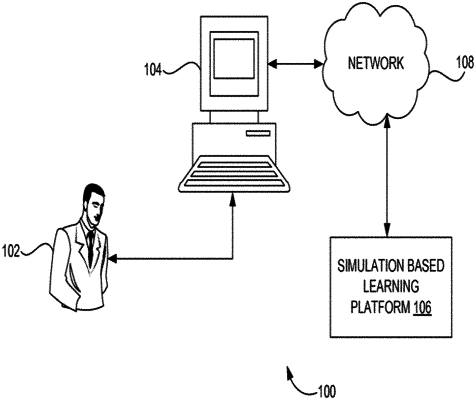| CPC G09B 7/00 (2013.01) [G09B 5/00 (2013.01); G09B 5/08 (2013.01); G09B 7/04 (2013.01)] | 19 Claims |

|
1. An apparatus comprising:
a processor; and
a memory that stores code executable by the processor to:
continuously monitor one or more interactions of a user with a computing device while the user performs one or more simulated tasks digitally presented to the user via the computing device, the one or more simulated tasks associated with a learning path;
track data describing the user's interactions during the user's performance of the one or more simulated tasks of the learning path;
dynamically and in real-time, optimize the user's learning path by simulating multiple different learning paths using one or more machine learning processes and the tracked data;
present one or more recommendations to the user for optimizing the user's learning path, the one or more recommendations generated as a function of the optimized learning path, the one or more recommendations comprising one or more hints that are presented to the user via the computing device at predetermined time intervals based on steps taken during the user's learning path; and
convert the user's interactions for performing the one or more simulated tasks into code for one or more programming languages.
|